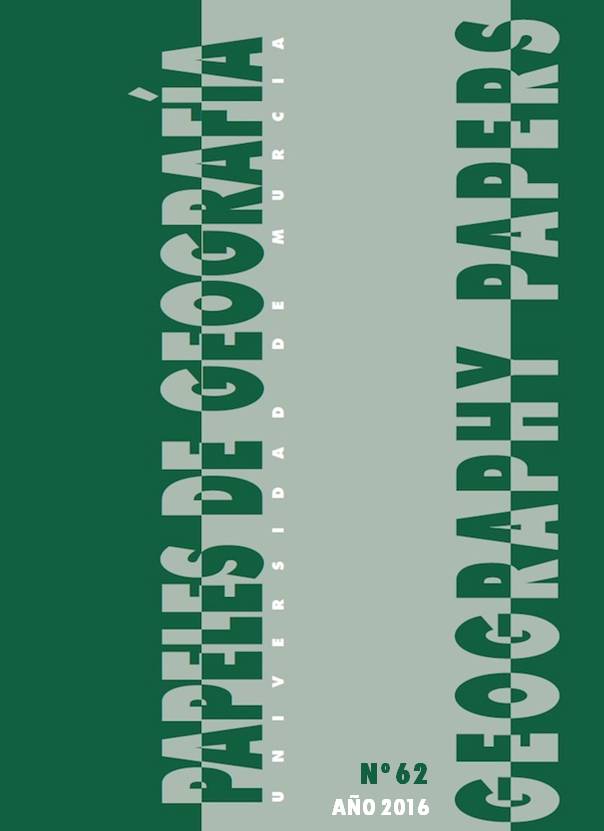Application of Territorii method in two spontaneous settlements of Puerto Madryn, Argentina
Supporting Agencies
- CONICET
Abstract
The aim of this work is make a socio-territorial diagnosis in two unplanned settlements in the city of Puerto Madryn: La Lomita and Alta Tension, applying the Territorii method and its eight phases -real, lived, past, legal, thought, possible, smart and arranged territories in such settlements. In order to join the communities for building more sustainable territories, it also aims to identify in the participants of the process how much are present the four modes of transformation proposed by the International Network of Territorial Intelligence: subjective, social, environmental and decision-making, as well as the "four legs of the table" of the Latin American territorial intelligence: public and community actors, entrepreneurs and scientists.
Downloads
References
BOZZANO, H. (2009a) Territorios: el método Territori. Una mirada territorial a proyectos e investigaciones no siempre territoriales. International Conference of Territorial Intelligence Territorial. Intelligence and Culture of Development ‐ November, 4th ‐ 7th. ENTI Salerno.
BOZZANO, H (2009b) Territorios posibles. Procesos, lugares y actores. Editorial Lumiere, Buenos Aires.
BOZZANO, H (2013) Revista Arquetipo. “Procesos de intervención y transformación con inteligencia territorial. Stlocus y Territorii en la caja de herramientas”. UCP. N°7, julio-diciembre 2013, Pereira de Risaralda, Colombia.
CENSO DE POBLACIÓN, HOGARES Y VIVIENDAS (2010). Dirección General de Estadísticas y Censos de la Provincia de Chubut. Instituto Nacional de Estadísticas y Censos INDEC.
DE SOUSA SANTOS, B. (2009). Una epistemología del sur: la reinvención del conocimiento y la emancipación social. Ed. Gandarilla Salgado. Mèxico. Siglo XXI. Clacso.
DE SOUSA SANTOS, B. (2010) Descolonizar el saber, reinventar el poder. Ediciones Trilce. Uruguay.
DIAGNÓSTICO COMUNITARIO PARTICIPATIVO DEL BARRIO ALTA TENSIÓN (2014). Residencia Interdisciplinaria de salud mental comunitaria. Centro de atención primaria de la salud “Rene Favaloro”. Fernandez, M.
FREIRE, P. (1990) La naturaleza política de la educación, Barcelona: Paidós.
GARCÍA DE HERNÁNDEZ, N. (2006). “La formación de asentamientos informales: un proceso gestado por diferentes actores sociales”. Scripta Nova. Revista Electrónica de Geografía y Ciencias Sociales Vol. X, núm. 218 (50), 1 de agosto de 2006, Universidad de Barcelona, España.
GIRARDOT J.-J. (2009). ReS-Ricerca e Sviluppo per le politiche sociali . “Evolution of the Concept of Territorial Intelligence within the Coordination Action of the European Network of Territorial Intelligence”. 1-2/2009, p. 11-29.
GUERRERO, J.L. (2015). Densificación residencial informal en barrios y colonias del Área Metropolitana de Guadalajara. Dilemas y modelos espaciales (p. 239-265), en: Vidal-Koppmann, S. (comp.) Metrópolis en Mutación. Ed. Café de las Ciudades. Bs As.
INSTITUTO GEOGRÁFICO NACIONAL (2012). Atlas Geográfico de la República Argentina. (CD-ROM). Argentina: IGN.
PROYECTO DE CONSOLIDACIÓN URBANA NUEVA CHUBUT (2014) Unidad Ejecutora Municipal (Municipalidad de Puerto Madryn y Unidad Ejecutora Provincial (Promeba).
SASSONE, S.; HUGHES, J.; OWEN, M. (2013). Nuevos asentamientos precarios en la periferia de Puerto Madryn: Desafío para las intervenciones urbanísticas. en: Actas Congreso Internacional de Geografía. 74° Semana de Geografía. GAEA Sociedad Argentina de Estudios Geográficos. 31 de octubre al 3 de noviembre. Trevelin, Chubut.
WEBER, M. (1970) Ciencia y política. En: Ensayos de Sociología Contemporánea, Ed. Martínez Roca, Madrid.
The manuscripts published in Papeles de Geografía are subject to the following terms and conditions:
1. The publishing house of the University of Murcia (Servicio de Publicaciones de la Universidad de Murcia) keeps the copyright of the published manuscripts favouring and allowing the use and distribution of such works under the licence in 2 below.
© Servicio de Publicaciones, Universidad de Murcia, 2011
2. Manuscripts are published electronically under an Attribution Non-Commercial No Derivatives 3.0 Unported Creative Commons Licence Spain (Legal text). Readers are free to copy, use, share and redistribute the material in any medium or format as long as (i) appropriate credit is given to authors and original source (journal, publishing house and URL); (ii) the material is not used for commercial purposes and (iii) this licence and restrictions are stated.
3. Self-archive. Authors are allowed and encouraged to distribute pre-print versions (prior to evaluation) and/or post-print versions (after evaluation and accepted for publication) of their manuscripts. This favours the dissemination and early distribution of scientific knowledge and citing.






